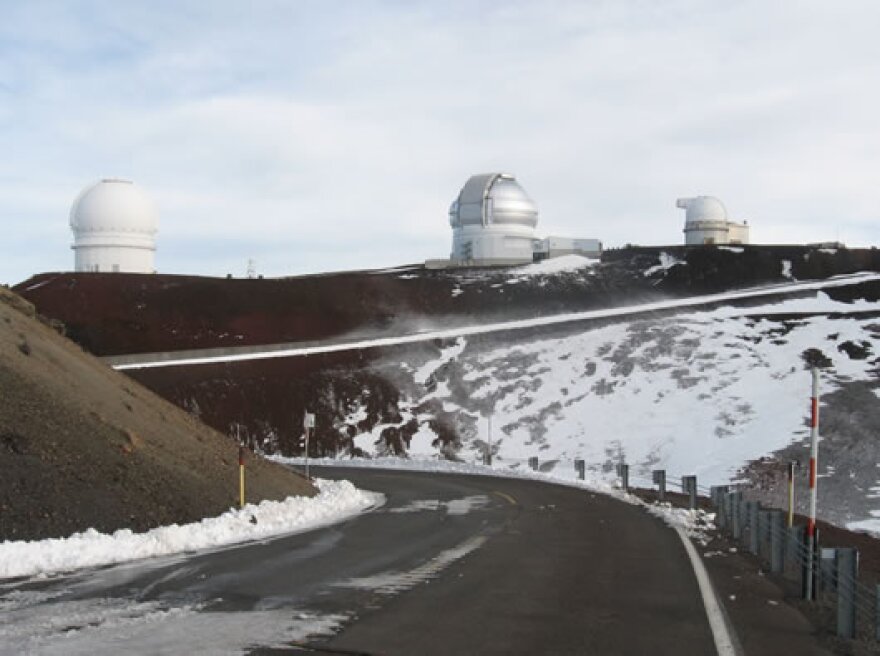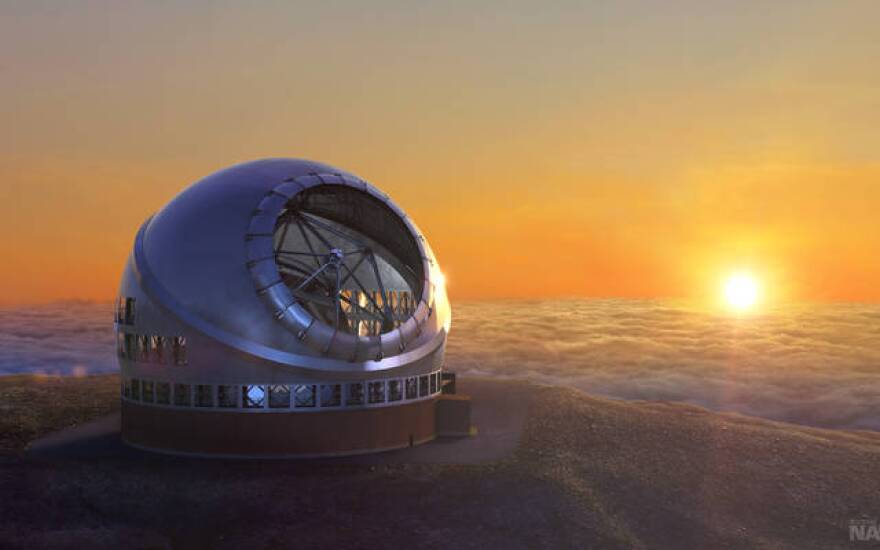The Thirty Meter Telescope may have been given the go-ahead by the Hawai?i Supreme Court. But there’s still a lot that needs to happen before construction can take place on Mauna Kea. HPR Reporter Ku?uwehi Hiraishi has this story
The Hawai’i Supreme Court decision to issue a Conservation District Use Permit for the Thirty Meter Telescope seems like a conclusive step in a nearly-decade long process. But Scott Ishikawa, spokesman for the project says telescope officials aren’t abandoning their plan B site in the Canary Islands just yet.

“That has always been plan B and we’ll keep that plan B in place,” says Ishikawa, “Just in the event you know for some reason or whatever reason TMT can’t be built on Mauna Kea.”
TMT officials signed a 75-year hosting agreement for the La Palma site and an environmental impact assessment has been submitted. If accepted, construction permits will be applied for. Ishikawa says the timeline for construction here in Hawai?i depends on two factors.

“One of them is we have to fill a number of requirements as part of that Conservation District Use Permit that was issued to us by the state. That's one factor,” says Ishikawa, “The other one is we're also going to have to work with the contractor to find out how much time they need to re-mobilize their crew and equipment to go back up the mountain.”

Construction on Mauna Kea was halted in 2015 following protests by Native Hawaiians and environmentalists.
“Change has come through those who have stood up against the forces and the powers,” says Kaho?okahi Kanuha, who opposes the Thirty-Meter Telescope.
Kanuha was arrested while protesting and later found not guilty of obstruction. He says he’s willing to do it again.

“I am not the only one who’s willing to redo what was done in 2015,” says Kanuha, “Even if that means being arrested.”
Kanuha is part of a group calling themselves mountain protectors. They consider Mauna Kea sacred and telescope construction to be a desecration.
The $1.4 billion telescope is projected to be 18 storeys tall with a footprint of nearly an acre and half.

“We wouldn’t build a project like this if it didn’t have a lot of good science,” says astronomer Roy Gal of the University of Hawai?i Institute for Astronomy.
He says TMT will allow astronomers to see deeper into space than ever before and with finer detail.
“To me the most exciting thing is the unknown,” says Gal, “What is it that we are going to find that we have no idea we were going to find?”
While there are native Hawaiians who support the telescope, the project has been a controversial one portrayed by some as a clash of culture and science.

“I think a lot of times it is presented as a clash or an opposition,” says Gal, “But honestly I don’t think that’s true. It’s not like you have to be for the telescope or for Hawaiian culture.”
Gal says the high court’s decision signifies a real attempt to allow culture and science to coexist.
“I do think that a lot of astronomers’ eyes have been open to some of the issues on the mountain,” says Gal, “I think it’s really helped to make it a more – make the astronomical community more aware of what’s going on and really try to respond to that.”
How the scientific community is able to respond to protestors may be another matter.
Hawaii Supreme Court Decision on Mauna Kea Conservation District Use Permit by HPR News on Scribd




